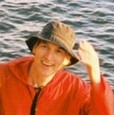The five great springs in the body are a central theme to most martial artists. It is a simple theme. Each arm is a spring that forms a fulcrum by bending at the elbow. Each leg is a spring formed at the knees. And the body itself forms a spring at the waist. They help to absorb and redirect even in the process of walking or sitting.
It is more complex than a simple spring because of the wonderful hinge / ball and socket of the shoulder or hip. Hands and feet integrate into the spring as well. Once that spring of the arm is sprung, the martial artists has the ability to directly connect to the body. The straight arm forms a direct connection and can no longer absorb incoming or outgoing force via the spring.
The idea of any martial conflict is an exchange of blows. Great damage is done if a fighting blow hits directly without any interference. Today this will be applied to the body mechanics of healing. Great damage can be seen by looking for where the springs are sprung.
So I was working on a desperate client who had trouble walking on one side, pain in his mid back, the opposite shoulder, and could no longer move his neck. It was not an unusual case in my practice as I see the hard cases -- otherwise someone would crack them in with D.C. or O.D. after their name.
In this case the idea of five great springs materialized. Note the five springs of the body -- each arm, each leg, and the body itself as being in optimum condition when they bend well. Any totally extended or collapsed spring is a non-working condition. Let that guide lead you to the knots. One in the upper fibular bone area, both sides of the mid-back, and finally on the upper thigh of the effected leg. Releasing knots is quite simple. Press and they are gone -- especially if you drive energy through them. Imagine the sun is pouring through the area and clearing it out.
The neck was a bit harder since a few restricted facets of the neck required resetting -- that is definitely beyond this article. Still, imagine that each vertebrae is a spring that normally has flex with its opposing muscles. In a way it was still releasing knots -- only by working with the motor points of the deep para-spinal muscles of the neck. Both sides of opposing muscles need released for the effect to be lasting.
Finally, he was moving with normal Range of Motion with a normal walk. Tui Na works.
The five great springs of the body can be seen and if you don't see a normal motion then they detect precisely where the defect lies. I like that, a mystery solved. I had him learn tai chi chuan walking so he can make the knees and feet the passive part of his walk long enough for him to recover completely.
David is an acupuncturist and herbalist treating the mind, body, and spirit as a healer, teacher, and songwriter. David practices in Wichita and Kansas City where he treats orthopedic problems as well as many auto-immune disorders like Lupus and Multiple Sclerosis.

Post new comment
Please Register or Login to post new comment.